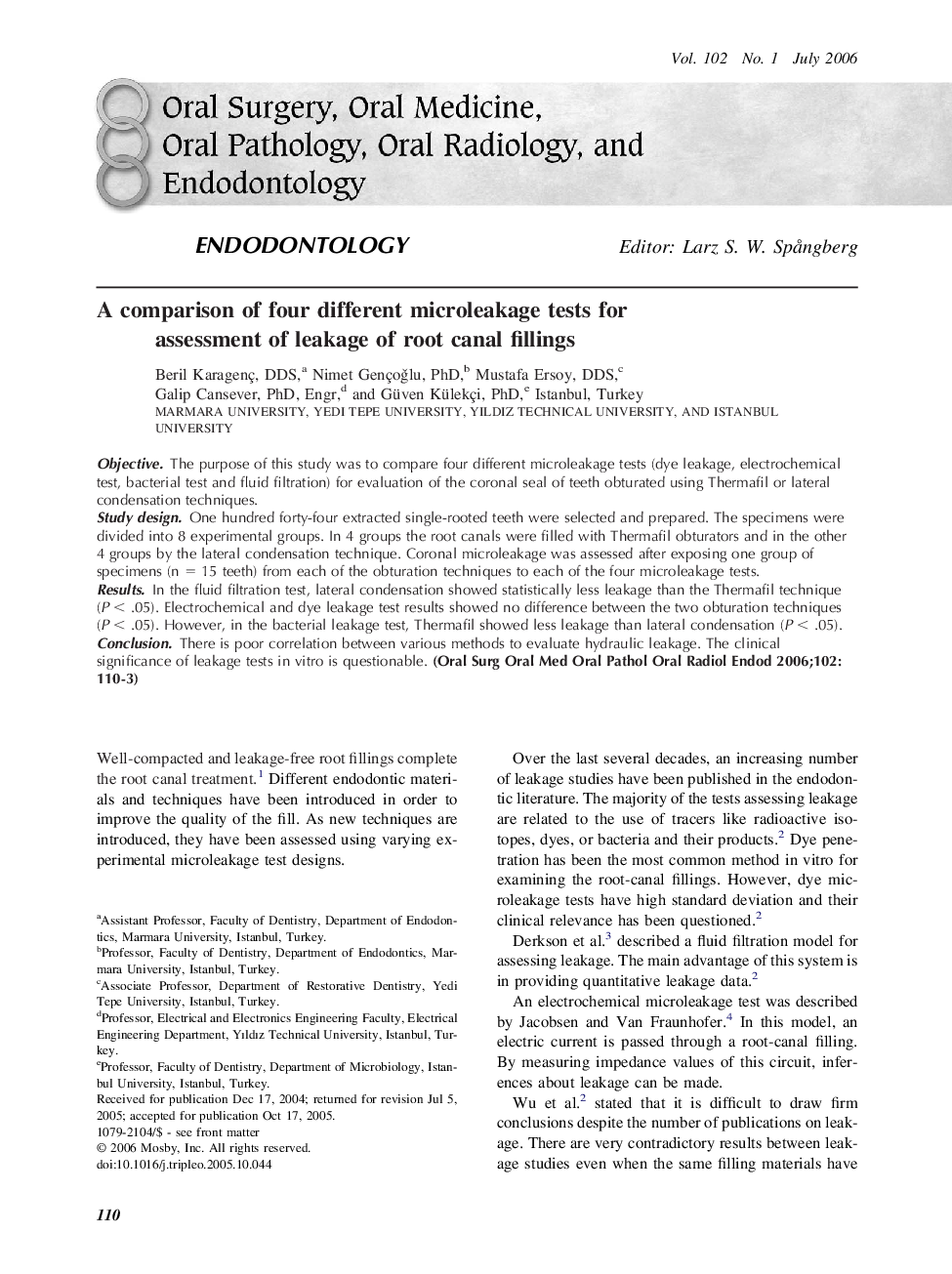| Article ID | Journal | Published Year | Pages | File Type |
|---|---|---|---|---|
| 3169857 | Oral Surgery, Oral Medicine, Oral Pathology, Oral Radiology, and Endodontology | 2006 | 4 Pages |
ObjectiveThe purpose of this study was to compare four different microleakage tests (dye leakage, electrochemical test, bacterial test and fluid filtration) for evaluation of the coronal seal of teeth obturated using Thermafil or lateral condensation techniques.Study designOne hundred forty-four extracted single-rooted teeth were selected and prepared. The specimens were divided into 8 experimental groups. In 4 groups the root canals were filled with Thermafil obturators and in the other 4 groups by the lateral condensation technique. Coronal microleakage was assessed after exposing one group of specimens (n = 15 teeth) from each of the obturation techniques to each of the four microleakage tests.ResultsIn the fluid filtration test, lateral condensation showed statistically less leakage than the Thermafil technique (P < .05). Electrochemical and dye leakage test results showed no difference between the two obturation techniques (P < .05). However, in the bacterial leakage test, Thermafil showed less leakage than lateral condensation (P < .05).ConclusionThere is poor correlation between various methods to evaluate hydraulic leakage. The clinical significance of leakage tests in vitro is questionable.
